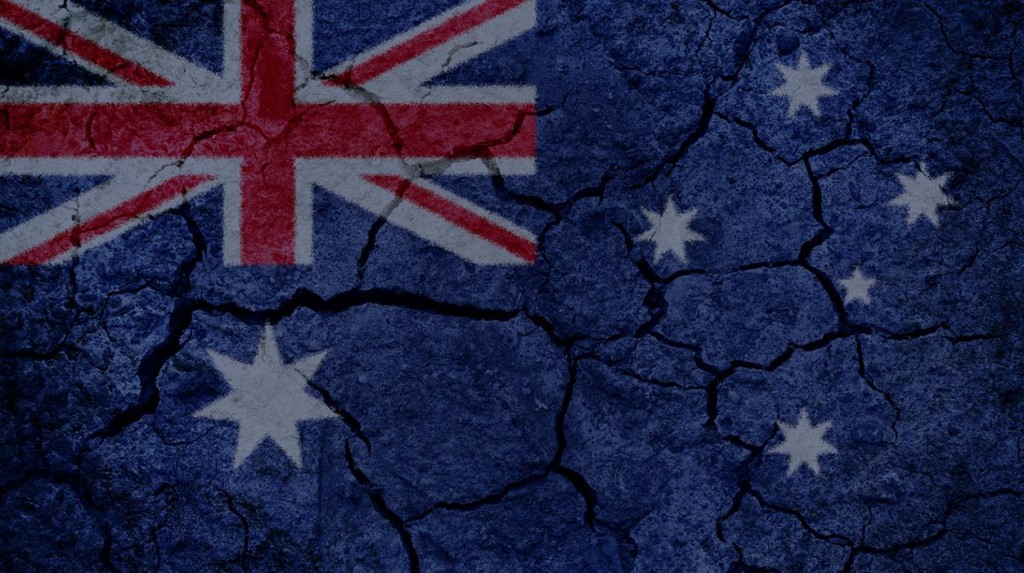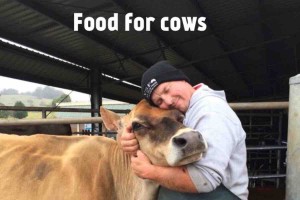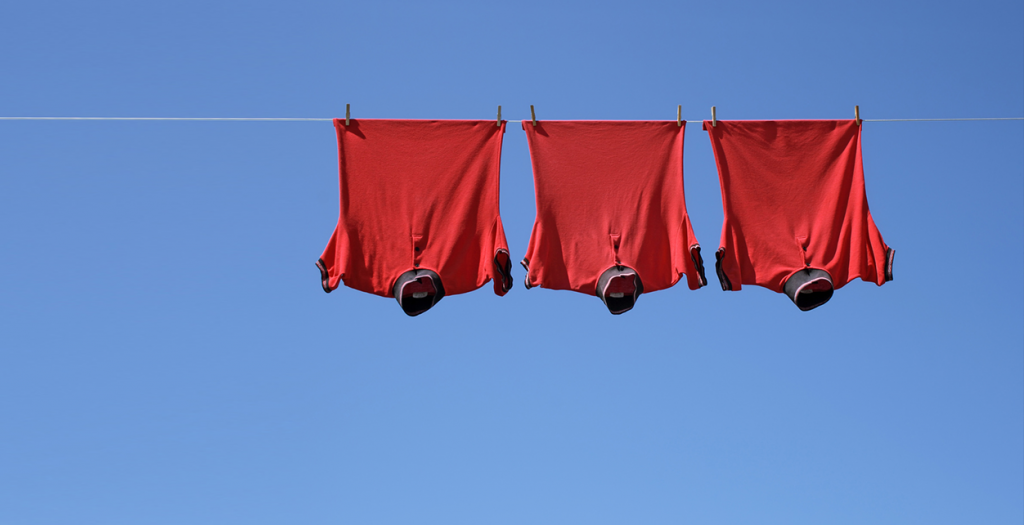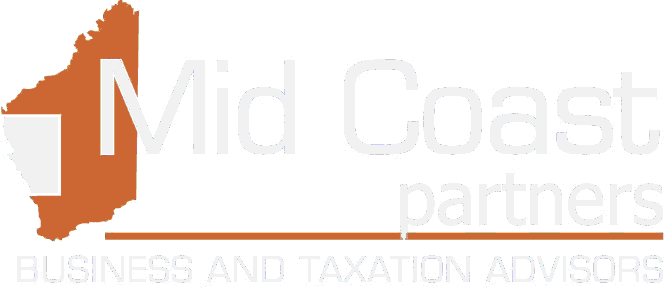Newsletter
Inside
- Will Australians Pay More for a Good Cause?
- Clothing Deductions Hung Out to Dry
- Are You Holding Back Your Business?
Will Australian’s Pay More for a Good Cause?

In the same month that desperate farmers made headlines preparing to destroy starving flocks and pleading with the public to pay a few cents more for their dairy products, Dick Smith’s nationalistic brand announced its closure. The question is, will Australians pay more for a cause?
Comments like “We’re with you” and the 2.8k heart emojis on facebook do very little when you can’t feed your herd. It’s nice there is emotional support and the plight of farmers is recognised but what does it really achieve?
Country Valley Milk reached out on facebook two months ago asking people to sponsor a cow –they estimated that each cow will cost $1,350 to feed until the end of September. Those that have contributed are rewarded with images of their cows – Cow 84’s new calf was shared with their adopted family on facebook (named Splotch MacGonagall by the adopted family).
Farmer Jason Maloney started a GoFundMe page called Food for cows. In a video with the Illawarra Mercury, Mr Maloney breaks down explaining that asking for help is the hardest thing he has had to do – but there has been no significant rain in two years and he doesn’t have enough food or water for the herd. He has already sent part of the herd to market. “I’ve never felt so ashamed and so desperate,” he says. The video is hard to watch.

Interviewed on the Today Show Mr Maloney went on to say that if consumers were willing to pay “20 cents extra for a litre of milk that goes to the farmer, that’s all it takes.”
The farmgate milk price is the price farmers receive from processors for the milk they produce. There is no legislative control over the price milk processing companies pay with pricing deregulated in 2000-01. Milk prices are based on the milk fat and protein solids content of the milk supplied. According to Dairy Australia, the typical factory price paid for farmgate milk per litre is $0.49 in NSW ($6.81 kg of milksolids (kgMS)), $0.38 in Victoria ($5.04 kgMS), $0.60 in Queensland ($8.22 kgMS), $0.37 in South Australia ($5.19 kgMS), $0.51 in Western Australia ($7.06 kgMS $0.39 in Tasmania ($4.97 kgMS). Both Coles and Woolworths sell their home brand milk (2 litre) for $1 per litre. The named milk brands tend to move between $1.50 and $2.93 per litre.
But will buying the more expensive branded milk guarantee that farmers get more? Choice says it is hard to say. The two largest processors are Fonterra Australia (owned by a New Zealand dairy cooperative) and Parmalat (an Italian company with French owners). Another large player, Murray Goulburn recently sold to Canadian company Saputo. Lion is owned by Japanese company Kirin. The processors purchase the milk from farmers and produce the varying products. Parmalat for example supplies Pauls, Farmhouse Gold, and Ski. Fonterra produces Mainland Cheese, Bega, Western Star and Perfect Italiano. The price of these brands varies but the price paid by the processor to the farmer is the same. The final price to the farmer depends on domestic and international demand. For example, Fonterra’s opening average milk price is $5.85 per kilogram of milk solids (kgMS) for season 2018-19, with the updated forecast closing average milk price range $5.85 to $6.20kgMS.
Choice says that consumers can support brands that process their own product and buy products from farm controlled co-operatives (co-operatives are owned by the farmers so not only do they get the farm gate price but a dividend). But above all, buy more Australian made dairy product.
Fundamentally however what the farmer is paid is based on demand and supply. Buying cheaper product will drive the price down, if demand is strong for premium products the price paid should go up. But there are no guarantees.
In July, Dick Smith announced that his Dick Smith Foods business will close down. In the 5 page letter to Woolworths, Coles and Metcash, Mr Smith places the blame for his food group’s failings at the feet of Aldi heading the letter “Secretive German Company Now Most Trusted Brand in Australia.” ‘Secretive’ because Aldi is a family owned German business and not publicly listed.
Smith cites Windsor Farms as an example of the negative impact of a low price model. “Windsor Farms was forced on the road to bankruptcy when Aldi started selling Australian canned beetroot at 75 cents per can. This product had typically sold for $1.30 per can. Very quickly, your companies [Coles, Woolworths, Metcash] matched the price – I can understand you had to do this. Within six months, Windsor Farms and their Cowra Cannery (the only Australian owned cannery remaining) had to close. All the loyal, hard-working staff, many of them Aussie battlers, lost their jobs. The investors lost millions of dollars, and small businesses in the Cowra area were never paid, with substantial amounts owing. I understand the unsecured creditors were over $750,000. The local transport company in Cowra lost $550,000 and their local electrician lost nearly $30,000. The main shareholder lost over $6 million. He was a wonderful Australian who did everything he could to keep the company going.” The collapse of the Cowra cannery occurred in 2013. Windsor Farms was sold to Spice Masters Australia.
The demise of Dick Smith Foods however did not come as a surprise to analysts. The company entered a mature, competitive and crowded market with nationalism as its differentiator – Australian grown, made and owned. The group’s Ozemite sells for $2.69 per 100g whereas market leader Vegemite is $2.23 per 100g for a similar small sized jar (Vegemite was bought by Bega in 2017). Not all of the product range are above the market leader’s pricing point but most offer little incentive to switch brands beyond a perception of doing the right thing.
Aldi are trusted as they perceive to be giving ‘ordinary Australians’ a ‘fair go’ at the checkout. They introduced competition to a sector where there was little choice between the major players. Consumers have responded well despite the reduced range, a lack of known brands and service extras, as long as they can pay less and get the Aldi special buys. Any potential impact on the manufacturing food chain of cheap pricing is too far removed.
The bottom line is that consumers will preference a product linked to a cause they identify with but only if there is a benefit in doing so. Cage free eggs are a case in point. While more expensive than caged eggs the demand for cage free eggs has grown. No one wants their egg choice to support perceived cruelty and free range eggs are perceived to be healthier and more natural.
One of the great things about Australia is that when the country has been in turmoil, it is the willingness of Australians, either individually or through their businesses, to do something that has made the difference. The Government is there for support but in a more rigid and structured way. If you think something should change, change it – as a nation we don’t wait for someone else to find the solution. Business can be an exceptional driver of change because of the reach and influence they have. But ultimately it is our capacity to innovate and find new solutions to problems that will succeed. If we are uncompetitive we will find ways to shift focus and deliver what the market wants. Take the example of Just Veg owned by Queensland based Kalfresh. Kalfresh has grown from a farm business to one of “Queensland’s leading vegetable production companies and boasts a state-of-the-art washing and packing facility”. They take ‘wonky carrots’, the ones that can’t be sold to fussy consumers, and turns them into farm to fork cut carrots for lunchboxes – perfectly sliced into bite sized sticks.
You can help farmers in need right now by donating to Rural Aid’s Buy A Bale program, Aussie Farmers Foundation, Thirsty Cow, and Need for feed to name a few. Woolworths announced a $1.5 million donation to Rural Aid on 29 July 2018 (the store also came under pressure on social media to donate to farmers the $71 million they are estimated to make from the plastic bag ban).
Clothing Deductions Hung Out to Dry

The Australian Taxation Office is closely examining work-related clothing and laundry expense claims of taxpayers submitting their 2017-18 tax returns.
The ATO says that clothing claims are up nearly 20% over the last five years with people either making mistakes or deliberately over-claiming. Common mistakes include people claiming ineligible clothing, claiming for something without having spent the money, and not being able to explain the basis for how the claim was calculated.
“Around a quarter of all clothing and laundry claims were exactly $150, which is the threshold that requires taxpayers to keep detailed records. We are concerned that some taxpayers think they are entitled to claim $150 as a ‘standard deduction’ or a ‘safe amount’, even if they don’t meet the clothing and laundry requirements,” Assistant Commissioner Kath Anderson said.
While this particular announcement focuses on clothing related expenses, it has been clear for some time now that the ATO is paying very close attention to work related expenses in general. All claims should be supported by evidence – just in case the ATO decides your claim requires closer scrutiny. We have heard of a number of real life examples in the last year or so where the ATO has queried and challenged very small deduction amounts which could not be supported by appropriate evidence.
What Can I Claim?
You can only claim a deduction for the cost of buying and cleaning:
- Occupation-specific clothing – for example, the checked pants a chef wears.
- Protective clothing – fire-resistant and sun-protection clothing, safety-coloured vests, non-slip nurse’s shoes, rubber boots for concreters, steel-capped boots, gloves, overalls, and heavy-duty shirts and trousers, and overalls, smocks and aprons you wear to avoid damage or soiling to your ordinary clothes during your income-earning activities, and
- Unique, distinctive uniforms – clothes that are designed and made for the employer and not publicly available – like shirts with the company logo.
Just because your employer requires you to wear a suit, this does not mean you can claim the cost of the suit or its cleaning.
If you claim a $150 on clothing and laundry expenses, just be aware that you might be asked to prove these expenses.
Are You Holding Back Your Business?

Overcoming the biggest problems in business often comes down to the simple things. Here are a few simple things you can do to capitalise on your opportunities and reduce your risks.
“I didn’t get time…” No more excuses
Most people simply don’t set aside the time to do the forward planning they know they need to do. Here’s a simple test: write down your goals for the business. Now ask yourself, are you doing something to achieve those goals every day or every week? If not, it’s not a goal. It’s just a nice thought.
Set a realistic budget
Financially mapping your business reduces your risk and removes some of the surprises that can occur. Your budget needs to be realistic – not just a percentage increase on last year.
Start with an operating budget and assess each line critically. Map your revenue to see where, how and when the money is coming in to create a reliable estimate of your income for the coming year. Once you have your revenue expectations in place, look at what is required to generate that income. For example, what advertising, marketing and resources will be required?
Once you are comfortable with your revenue, work up your expenditure budget. Be tough on costs. Don’t forget to allow for growth and the increases that are likely to flow through.
Once your budget is complete and you have a good idea of your likely profit margins, do a couple of alternative estimates for your key revenue drivers so you understand the impact of changes to your assumptions. Once you have all this in place, track and measure it throughout the year. Where possible, your management team should be a part of this process and take responsibility for achieving the budget numbers they give you. When people don’t take the steps that they knew were required to achieve the budget the gaps become obvious fairly quickly. Having a budget in place that you need to report on regularly makes you focus on what really needs to be done.
Map your cash
Even some very large businesses have failed because they ran out of cash. Understanding your cashflow needs is vital particularly for high growth business.
Understanding your cash position is about understanding the timing differences: How long will it take for your customers to pay you? How much stock will you need to hold? And, what are the payment terms required by your suppliers? With your cash flow, don’t forget to allow for things like tax payments, loan repayments, dividends and any capital purchases that are planned. These can be ‘big ticket’ items and if you don’t allow for them then you will get caught out.
As part of your cash flow forecast identify your capital expenditure requirements. Don’t deal with these on a one-off basis as they arise, plan them in advance.
Expect the unexpected
Growing to death is often the result of unplanned growth opportunities. It’s ironic that seizing a major sales contract or big new client can be your business’s ruin but its more common than you think.
Many business operators are very good at what they do. Most have an excellent knowledge of the business they conduct and understand their products and services. Most also have an in-depth knowledge of sales performance and revenue. Few however, have a high level of financial management expertise, so when a big new opportunity presents, critical financial questions are not part of the vocabulary. As a result, there can be a sudden and unintended impact on their financial position. A rush of sales might be a great thing but it is not always counterbalanced by a rush of income and profit. Free cash and liquidity are the victims.
Take all the tax advantages you can
For small business in particular there are a range of concessions and funding you can access. Many businesses simply don’t realise the opportunities available to them.
A simple example is trading stock valuations. Your trading stock is an asset that is recorded on your balance sheet. In most cases it should be tax neutral to you. The cost of purchasing stock is expensed in your profit and loss account and offset by the value of the stock asset, until you sell it. While the amount of stock you are carrying will impact on your cash position, because you have your funds tied up in it, there is no direct impact on your profits or taxable income until you sell that stock. However, if at 30 June some of your stock is worth less than its cost price, you have the option to value it at the lower figure and take the tax write off now, rather than wait until the stock is sold. This reduction in your stock value will produce a tax saving for you.
For tax purposes, there are a number of ways of valuing stock. Once you have done your stocktake (assuming you need to do one), you can choose what method to apply depending on the stock and your circumstances. The different ways of valuing stock can produce different results. Most businesses chose to value trading stock at cost – but you have the option of valuing your stock at cost, market selling price, or replacement value.
For example, if you have stock that is about to become obsolete, valuing it at cost price for tax purposes is not going to help you. In this situation you might be better off to value the stock at market selling price, particularly if it is a large quantity. The tax rules also allow you to use a value that is lower than cost, market selling price or replacement value if this is warranted because of obsolescence or other special circumstances as long as the value you elect is reasonable. Take the example of vitamins with a use by date that only has a month or two left on it. Leading up to and once the vitamins reach their use by date they are unsaleable. In this case, you would estimate how much of the stock you are likely to sell prior to the use by date and at what price. Using previous sales as a guide, if you only expect to sell 15% of the stock prior to the use by date, you would use the market value of this 15%. Other than when you sell your stock, your tax return gives you a once a year opportunity to adjust your stock values and realise any losses.
Another way businesses disadvantage themselves is not taking the Government concessions available to them. The R&D tax incentive and Export Market Development Grant are a classic case. In the case of R&D incentives, if you develop new technologies or products, you might be eligible for a 43.5% tax offset (if your business has a turnover under $20 million). The Export Market Development Grant reimburses up to 50% of eligible export promotion expenses above $5,000 provided that the total expenses are at least $15,000.
Quote of the month
“If your house is burning, wouldn’t you try and put out the fire?”
– Imran Khan, former cricketer and Pakistan’s incoming Prime Minister.
General information disclaimer:
This article is for use of a general nature only and is not intended to be relied upon as, nor be substitute for, specific professional advice. No responsibility for loss occasioned to any persons or organisations acting on or refraining from action as a result of any information or material on our website will be accepted. Please ensure you contact us to discuss your particular circumstances and how the information provided applies to your situation.
